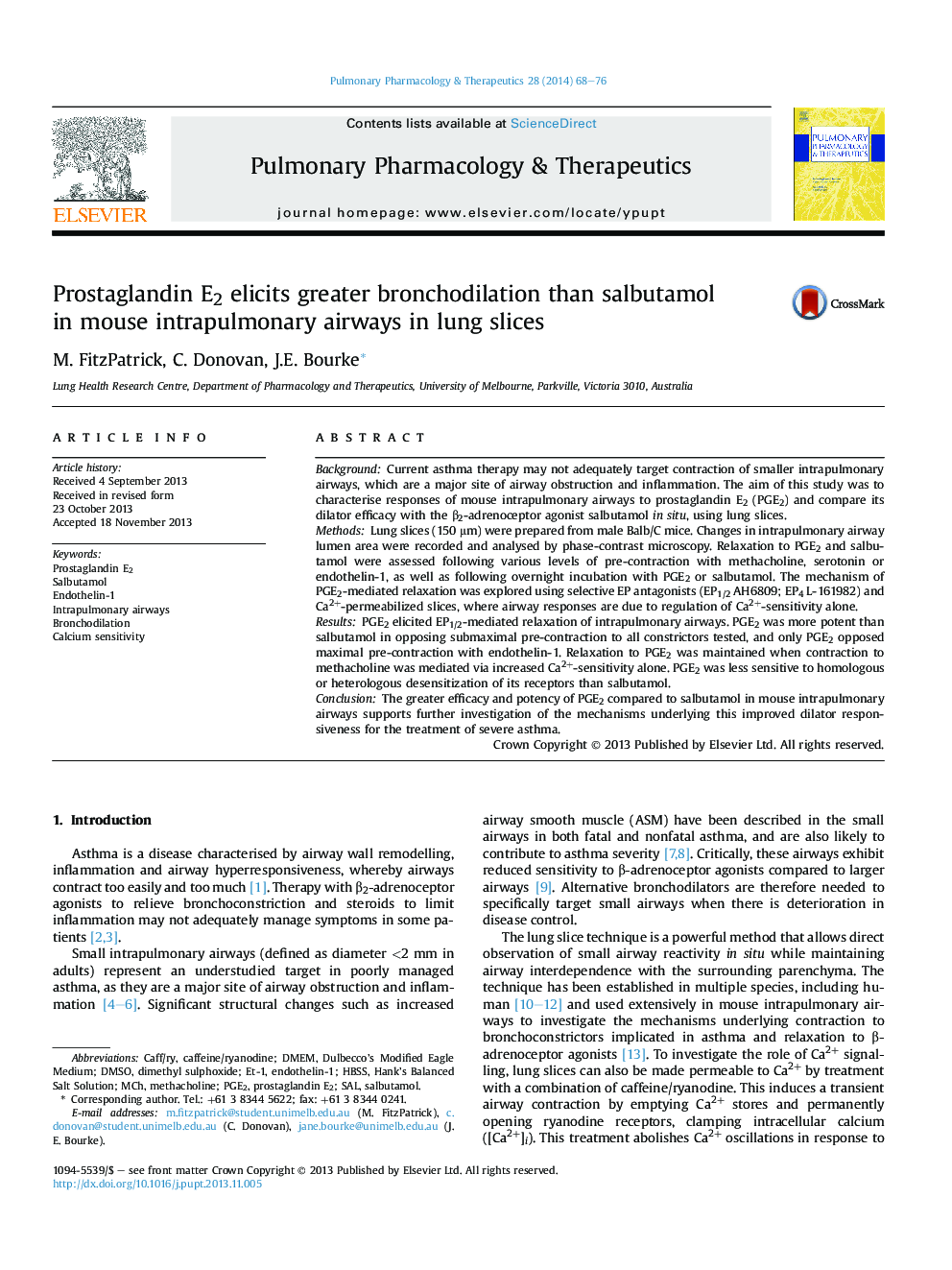| Article ID | Journal | Published Year | Pages | File Type |
|---|---|---|---|---|
| 2567028 | Pulmonary Pharmacology & Therapeutics | 2014 | 9 Pages |
BackgroundCurrent asthma therapy may not adequately target contraction of smaller intrapulmonary airways, which are a major site of airway obstruction and inflammation. The aim of this study was to characterise responses of mouse intrapulmonary airways to prostaglandin E2 (PGE2) and compare its dilator efficacy with the β2-adrenoceptor agonist salbutamol in situ, using lung slices.MethodsLung slices (150 μm) were prepared from male Balb/C mice. Changes in intrapulmonary airway lumen area were recorded and analysed by phase-contrast microscopy. Relaxation to PGE2 and salbutamol were assessed following various levels of pre-contraction with methacholine, serotonin or endothelin-1, as well as following overnight incubation with PGE2 or salbutamol. The mechanism of PGE2-mediated relaxation was explored using selective EP antagonists (EP1/2 AH6809; EP4 L-161982) and Ca2+-permeabilized slices, where airway responses are due to regulation of Ca2+-sensitivity alone.ResultsPGE2 elicited EP1/2-mediated relaxation of intrapulmonary airways. PGE2 was more potent than salbutamol in opposing submaximal pre-contraction to all constrictors tested, and only PGE2 opposed maximal pre-contraction with endothelin-1. Relaxation to PGE2 was maintained when contraction to methacholine was mediated via increased Ca2+-sensitivity alone. PGE2 was less sensitive to homologous or heterologous desensitization of its receptors than salbutamol.ConclusionThe greater efficacy and potency of PGE2 compared to salbutamol in mouse intrapulmonary airways supports further investigation of the mechanisms underlying this improved dilator responsiveness for the treatment of severe asthma.
